Recent Articles
Popular Makes
Body Types
2019 Honda Passport Road Test and Review
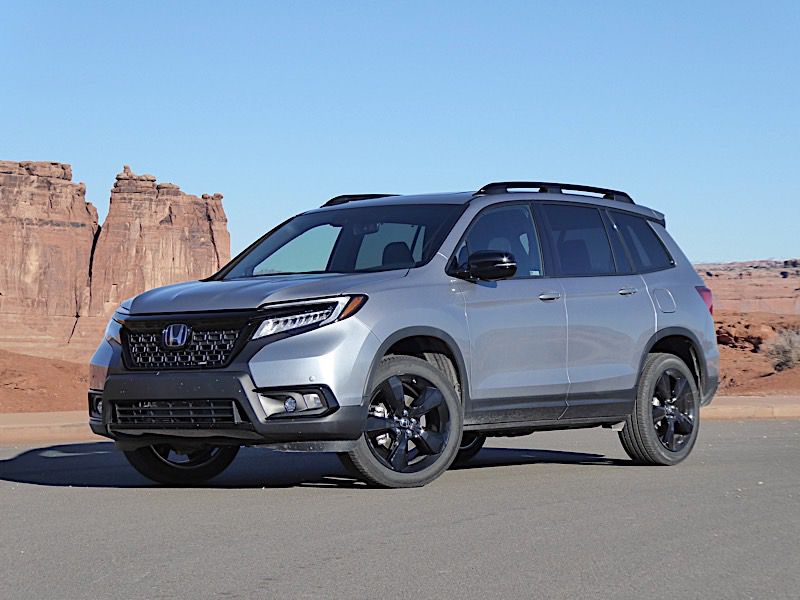
20 passport front beauty ・ Photo by Ron Sessions
The all-new 2019 Honda Passport is the fourth entry in the brand’s crossover SUV lineup, slotted between the best-selling compact CR-V and the almost-full-size three-row Pilot. Honda tossed the Pilot’s third-row seat, chopped 6 inches off the tail, and created a new model with a huskier bent. The five-passenger Passport looks a bit like a Pilot that’s taken a whirl through an outdoorsy upfitter with its raised stance, blacked-out trim, and tall 20-inch standard wheels. Honda’s been seeing a small but steady flow of buyers seeking a more rugged-looking SUV defecting to other brands of late. In resurrecting the moniker of Honda's first-ever SUV in the mid-1990s, the truck-based Passport, it’s signaling that it offers not merely an elevated seating position and lots of cargo space, but a machine with the back-country, off-pavement attitude and capability that can satisfy the occasional weekend adventurer.
There is no bare-bones Passport LX model as there is for the Pilot. The “base” front-wheel drive Passport Sport comes pretty well equipped for $33,035 (including the $1,045 destination charge), walking up to the $37,455 EX-L, $40,325 Touring, and $44,725 Elite.
Road Ready
When it comes to on-road ride and handling of the new Passport, erase any memories you may have had about the dynamic behavior of the old 1994-2002 Passport, which was based on the Isuzu Rodeo. The new Passport is based on the same Global Light Truck Platform as the aforementioned Honda Pilot SUV, plus the company's Ridgeline pickup and Odyssey minivan. The Passport also shares many of its mechanicals with those vehicles, retuned for Passport duty, with quicker steering and brake responses and revised shock and spring damping. Meaty standard 20-inch tires make the Passport look good while doing so. And with fewer pounds to haul around, the Passport drives smaller than the Pilot, despite identical gearing.
Under the hood is the same lively direct-injected 3.5-liter V6 with 280-horsepower and 262 lb-ft of torque that moves the Pilot. It’s teamed with a standard wide-ratio nine-speed automatic transmission that’s also available on upper Pilot trims. The V6/nine-speed combo delivers ample acceleration and pleasing throttle response across a wide rpm band. The transmission offers a sport mode that stays in the lower gears longer and paddle shifters for manual shift control.
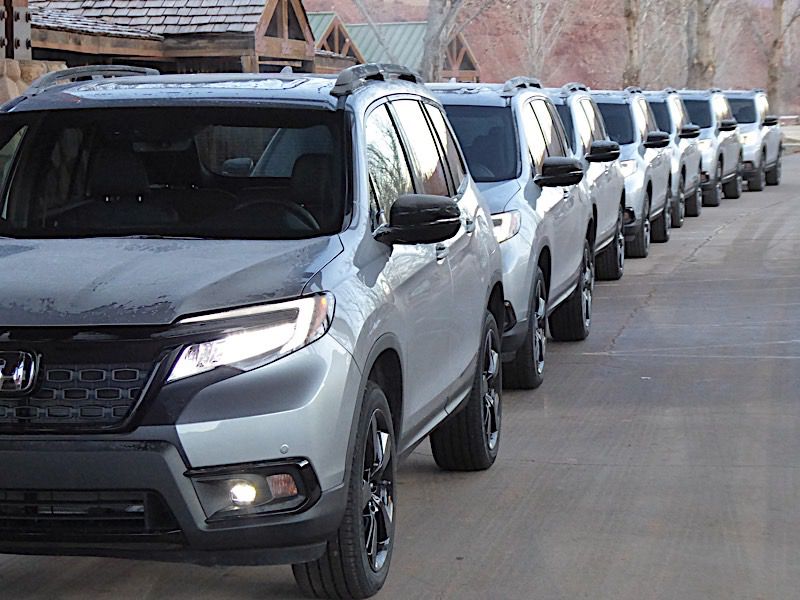
Photo by Ron Sessions
Gas and Go
With front-wheel drive, the Passport’s 3.5-liter V6 is EPA-rated at 20 mpg in the city, 25 mpg on the highway, and 22 mpg combined. All-wheel drive versions drop by 1 mpg. In a day of driving nearly 100 miles of paved mountain roads and rock-peppered dirt trails at 4,000- to 5,000-foot altitudes in red rock country near Moab, Utah, the Passport’s trip computer showed 17.6 mpg. Not bad considering the high elevation, slow going over rocks, and numerous stops with the engine idling to snap photos.
The Passport is equipped with a fuel-saving stop/start system that automatically shuts off the engine at idle, but we turned the system off (using the console-mounted switch) to keep the engine going during the steeper, more-technical off-road drive segments. It’s also equipped with Variable Cylinder Management that shuts off some of the six cylinders when coasting or cruising under light throttle at highway speeds. As with other Hondas, the Passport runs on less-expensive regular unleaded fuel.
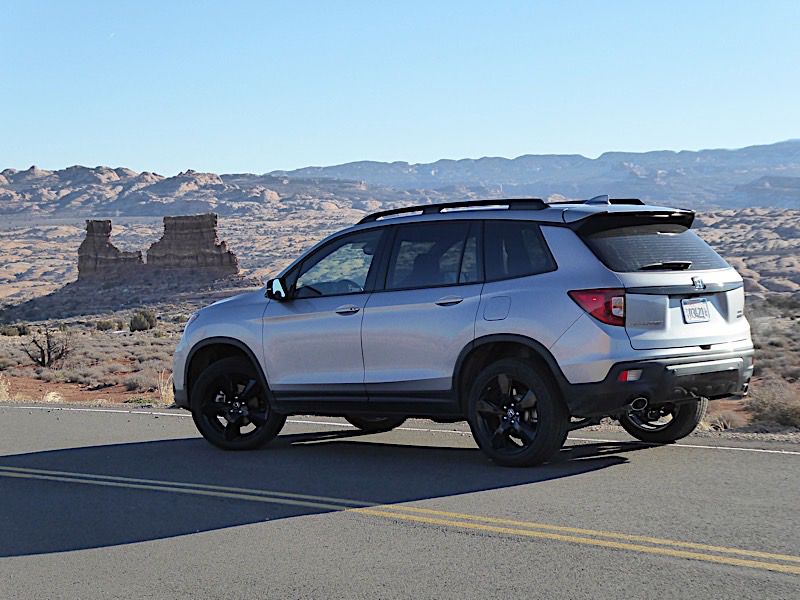
Photo by Ron Sessions
Making the Grade
Helping make the Passport more maneuverable on-road and agile in the back country is its shorter rear overhang, roughly half a foot shorter than the three-row Honda Pilot’s. While there are no factory-installed underbody skid plates to protect suspension, exhaust, and drivetrain components from rocks, stumps and other off-road obstacles, the Passport rolls with up to 8.1 inches of ground clearance on AWD versions. That's almost an inch more than under the Pilot, which translates to fewer scrapes and bumps from those off-pavement hazards. The Passport’s additional ride height also means the bumpers are farther off the ground, so combined with the new Honda’s shorter rear overhang (compared to the Pilot), it can climb or descend steeper angles without dragging or scratching its nose or tail.
Two-wheel drive Passports can tow up to 3,500 lbs; AWD variants increase that number to 5,000 lbs, topping the claimed tow ratings of the Ford Edge, the Nissan Murano, and new Chevrolet Blazer. All-wheel drive is a $1,900 upcharge for the Sport, EX-L, and Touring models and standard on the Elite.
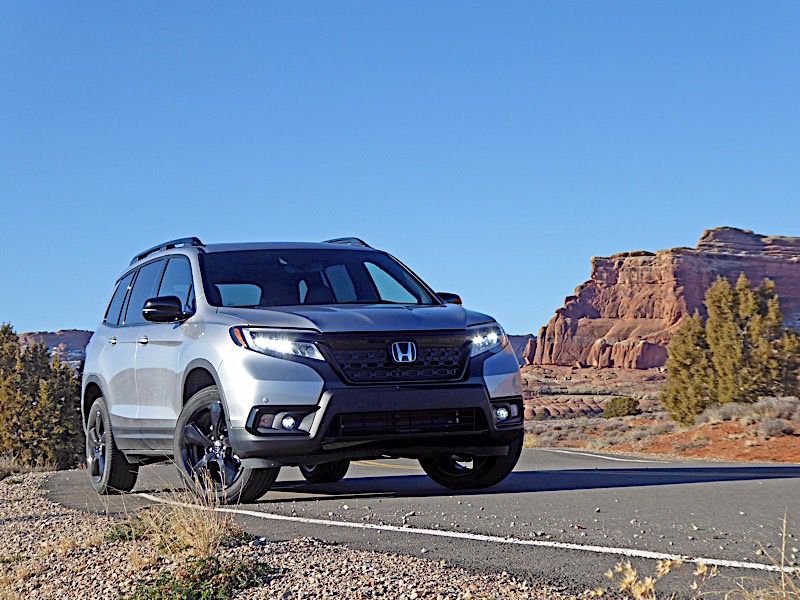
Photo by Ron Sessions
Traction Action
Although the Passport isn’t a hardcore off-roader, it has technology that enables it to tackle most off-pavement situations that owners will encounter. The Passport’s Intelligent Traction Management has driver-selectable modes that can tailor throttle response, shifting, stability control, and, where equipped, AWD torque distribution to the particular traction environment. Besides the Normal setting, there’s Snow mode for front-drive models and a choice of Snow, Sand, or Mud modes for all-wheel drive versions.
Totally transparent in operation is the available i-VTM4 AWD system’s torque-vectoring feature. In addition to the ability to send as much as 70 percent of the engine’s drive torque to the rear wheels and tailor 100 percent of that to the left or right depending on available traction, torque-vectoring enables the Passport to handle sharp corners without understeer by overdriving the outside rear wheel. There are no buttons to push or levers to pull as with old-school 4WDs. It works automatically. The cool thing is the driver can monitor where and how much drive torque is going to each wheel in a real-time instrument panel graphic display.
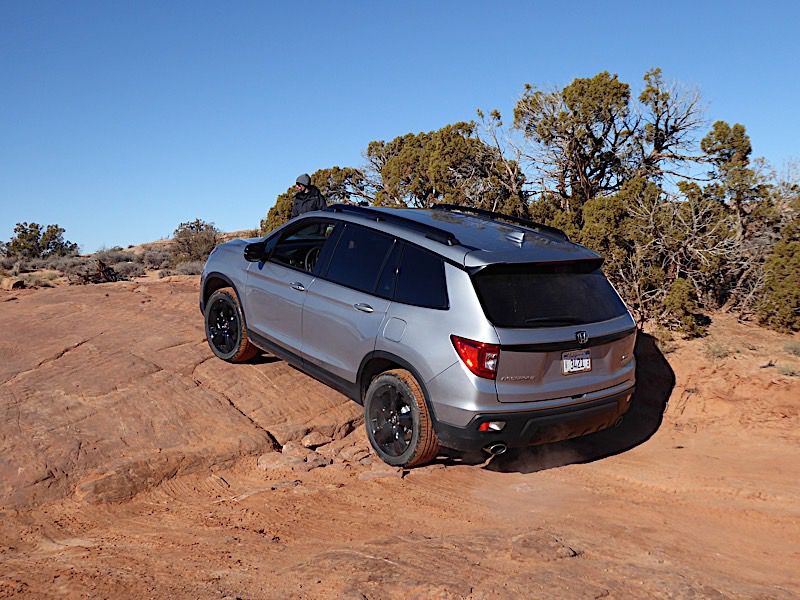
Photo by Ron Sessions
Dashing Interior
The Pilot-based Passport’s cabin is attractive and functional, with plenty of spread-out room, comfortable front buckets, a power driver’s seat, tri-zone automatic air conditioning, push-button start, and a driver-configurable 7-inch instrument display.
There’s plenty of storage in the doors, a big glovebox and a tambour-door covered console bin. Outward visibility is good thanks to thin windshield pillars and small front quarter windows. Moving up to the EX-L trim brings leather-trimmed seats and steering wheel, a garage-door opener, heated front seats, driver’s seat memory, a power front-passenger seat, and a power moonroof. Even with the added ride height, ingress and egress are easy and running boards aren’t necessary.
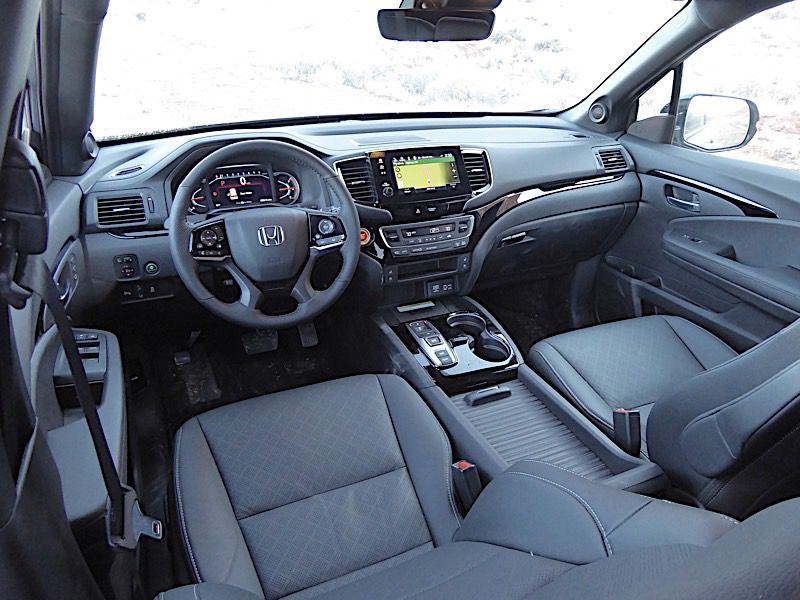
Photo by Ron Sessions
Navigating Infotainment
Although the base Sport model comes only with a smallish 5-inch infotainment screen with hard buttons, the EX-L, Touring, and Elite upgrade to the hi-res 8-inch touchscreen seen here. It features full pinch-and-swipe functionality as well as a hard rotary volume knob (but no tuning knob).
Also included on EX-L and higher models are SiriusXM, HD radio, SMS text messaging functionality, HondaLink telematics, and Apple CarPlay and Android Auto compatibility for running native cellphone apps via a USB cable. For navigation and a premium 10-speaker audio system, buyers need to upgrade to Passport Touring or Elite.

Photo by Ron Sessions
Push-Button Shifter
Honda has dispensed with the traditional console-mounted shift lever for models with the nine-speed transmission in favor of a push-button arrangement that’s in the same location the previous shifter was. There really isn’t any more space atop the console for bins, cupholders and such, but the lack of a 6-inch tall shift lever means controls for the seat heaters, available wireless phone charger and other functions on the lower dash are easier to see and operate.
The shifter's buttons do, however, take some time to learn, initially requiring the driver to look down to find the right button rather than moving a lever fore and aft and counting the clicks by feel. You might want to practice before attempting a hurried three-point turn in front of busy oncoming traffic.
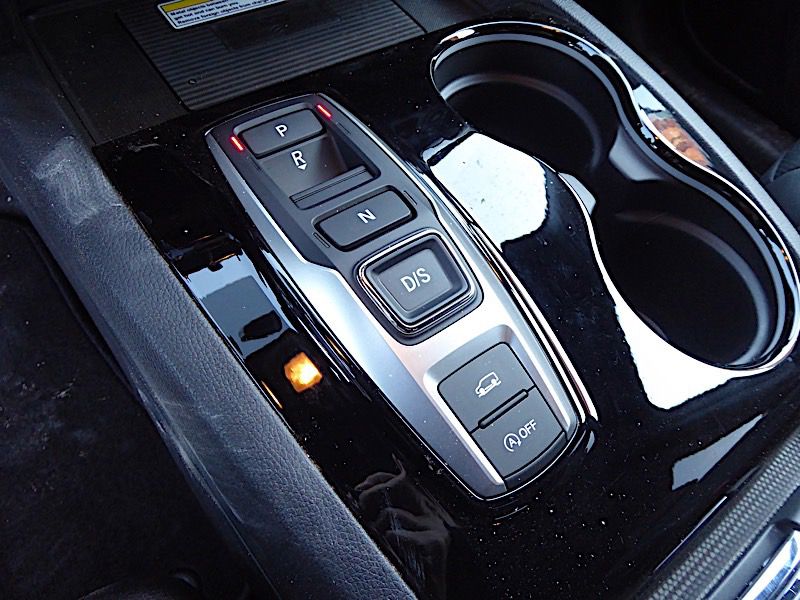
Photo by Ron Sessions
Back Seat
There’s about an inch more rear-seat legroom in the Passport than in the second row of the Pilot, but surprisingly almost an inch less than in the rear of the CR-V.
Even though there’s no third-row seat in the Passport, its rear seat still slides fore and aft to accommodate differing rear-seat legroom/cargo floor length needs. The rear seat is split 60/40, and the seatbacks recline individually as well as fold flat for increased cargo space.
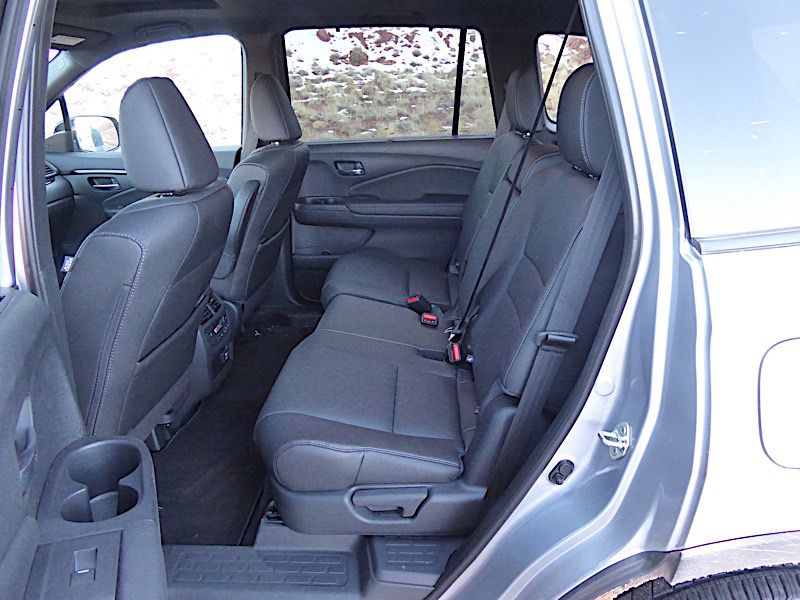
Photo by Ron Sessions
Storage Solutions
Despite a 6.2-inch snip aft of the back wheels, the two-row Passport offers nearly as much cargo space as the three-row Pilot. There’s 41.2 cubic feet of space behind the rear seat and 77.9 cubic feet total with the rear seatbacks folded. A more upright rear liftgate also helps the Passport swallow taller cargo items.
Under the Passport’s cargo floor, engineers made good use of the space freed up from deleting the third-row seat, creating two large wells of hidden storage that are plenty big for travel bags, computer cases, purses, cameras, and other valuables.
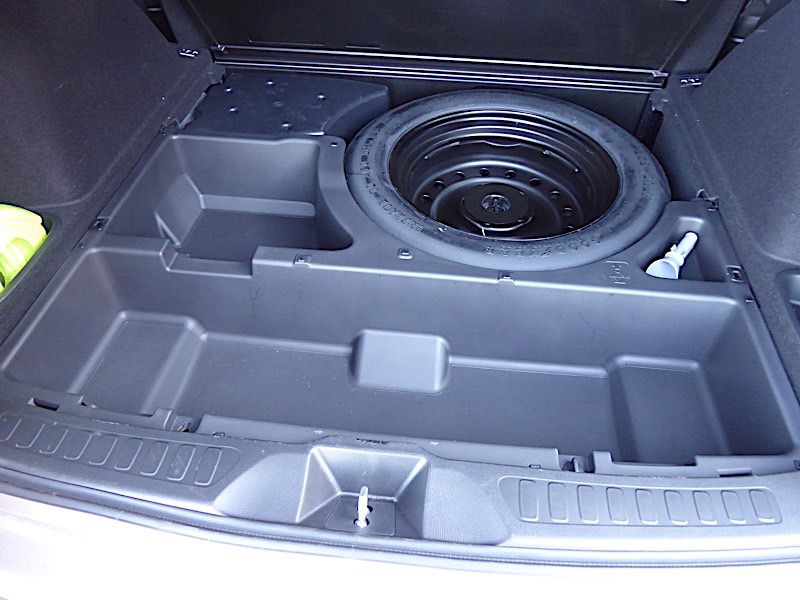
Photo by Ron Sessions
Safety Tech
It’s been 15 years since Honda’s last rugged-looking, off-road-capable five-passenger SUV — the old truck-based Passport — rolled out of the carmaker’s dealerships. The 2019 Passport benefits from a decade and a half of development that gives the new model the technology and the highway smarts to make it equally at home on or off the pavement.
In addition to a multi-angle backup camera, the new Passport comes standard with the latest safety tech, including automatic emergency braking, lane-keeping assistance, a lane-departure warning, and adaptive cruise control.
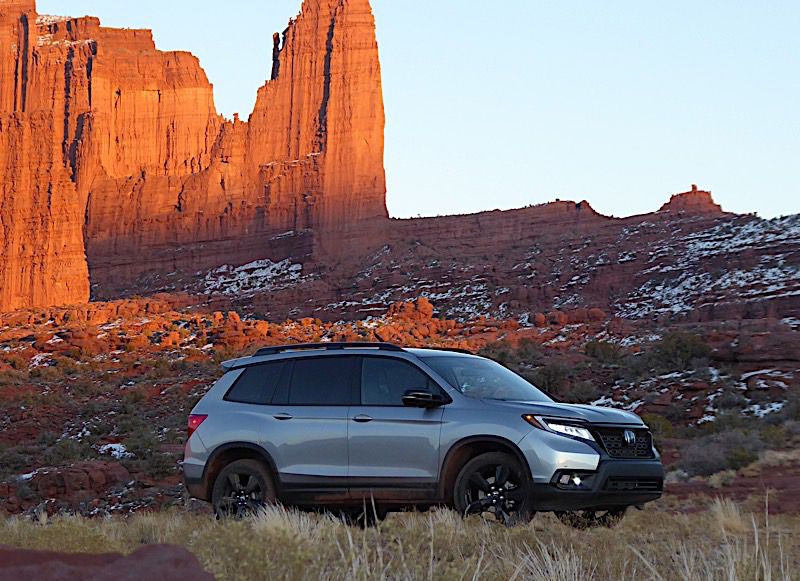
Photo by Ron Sessions